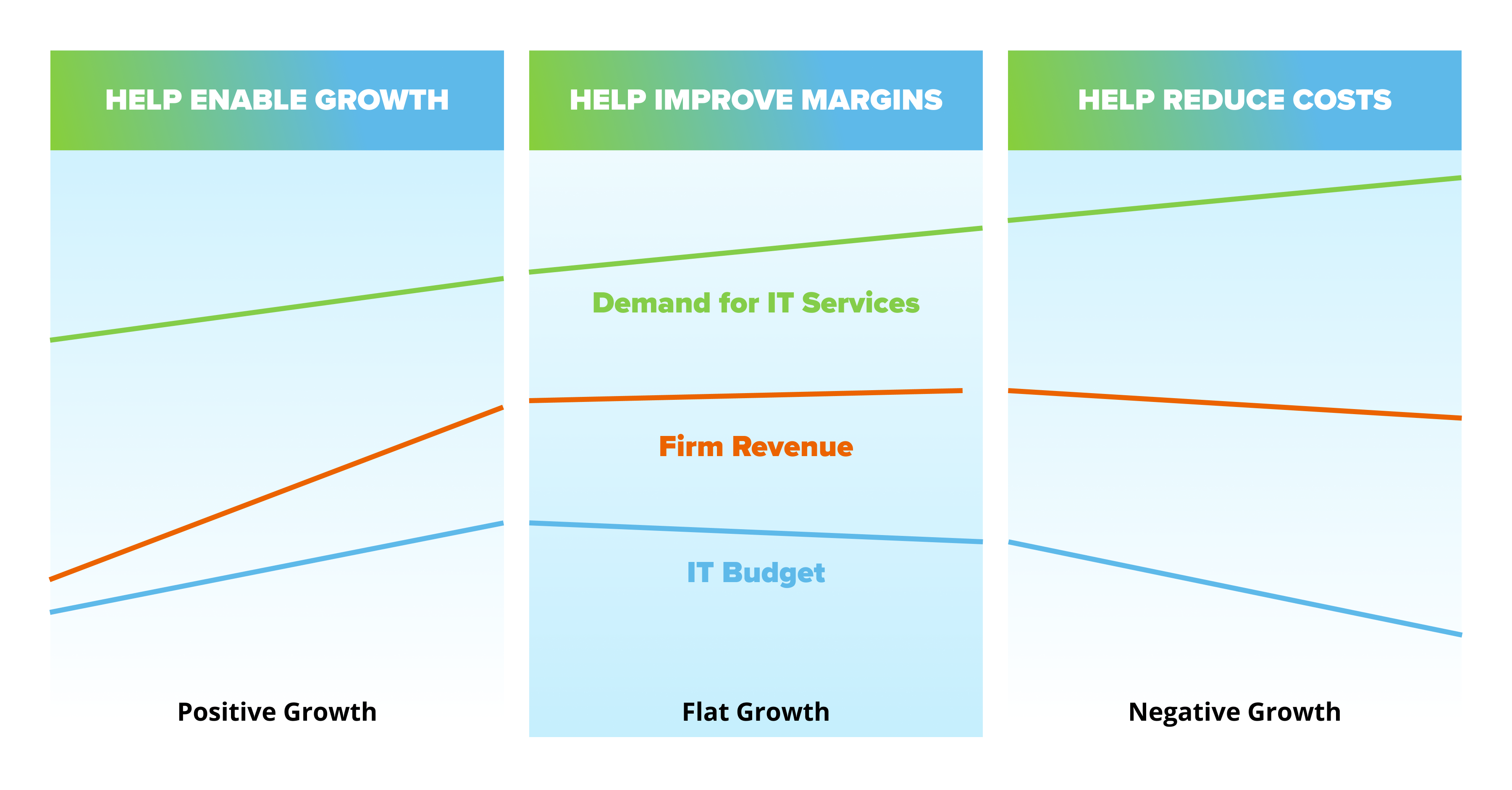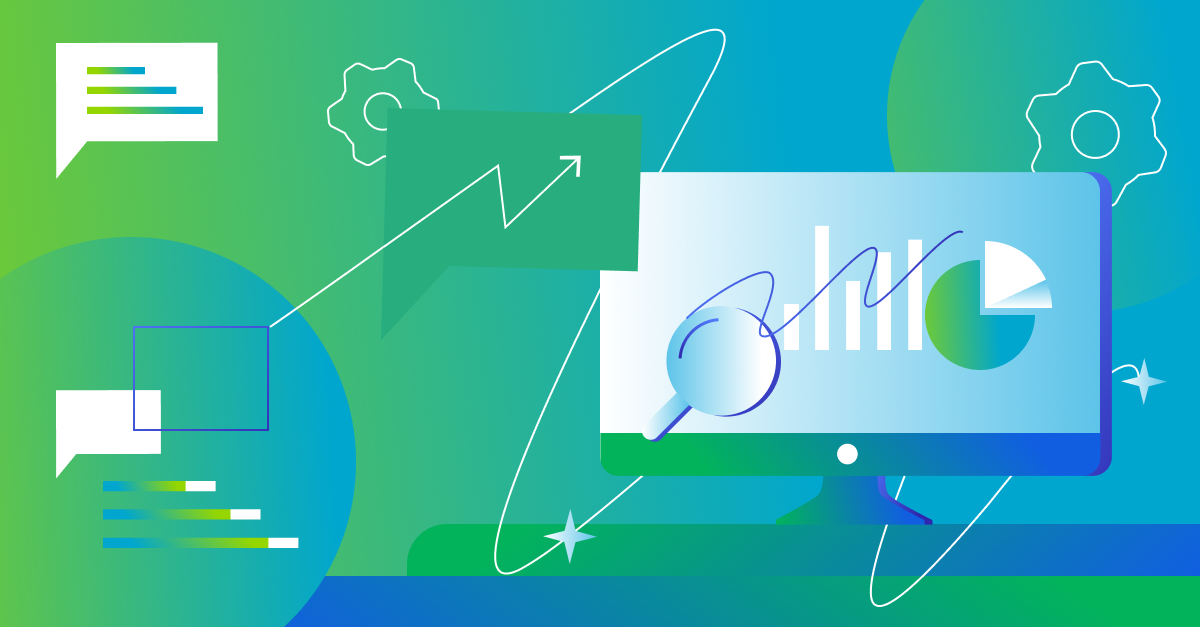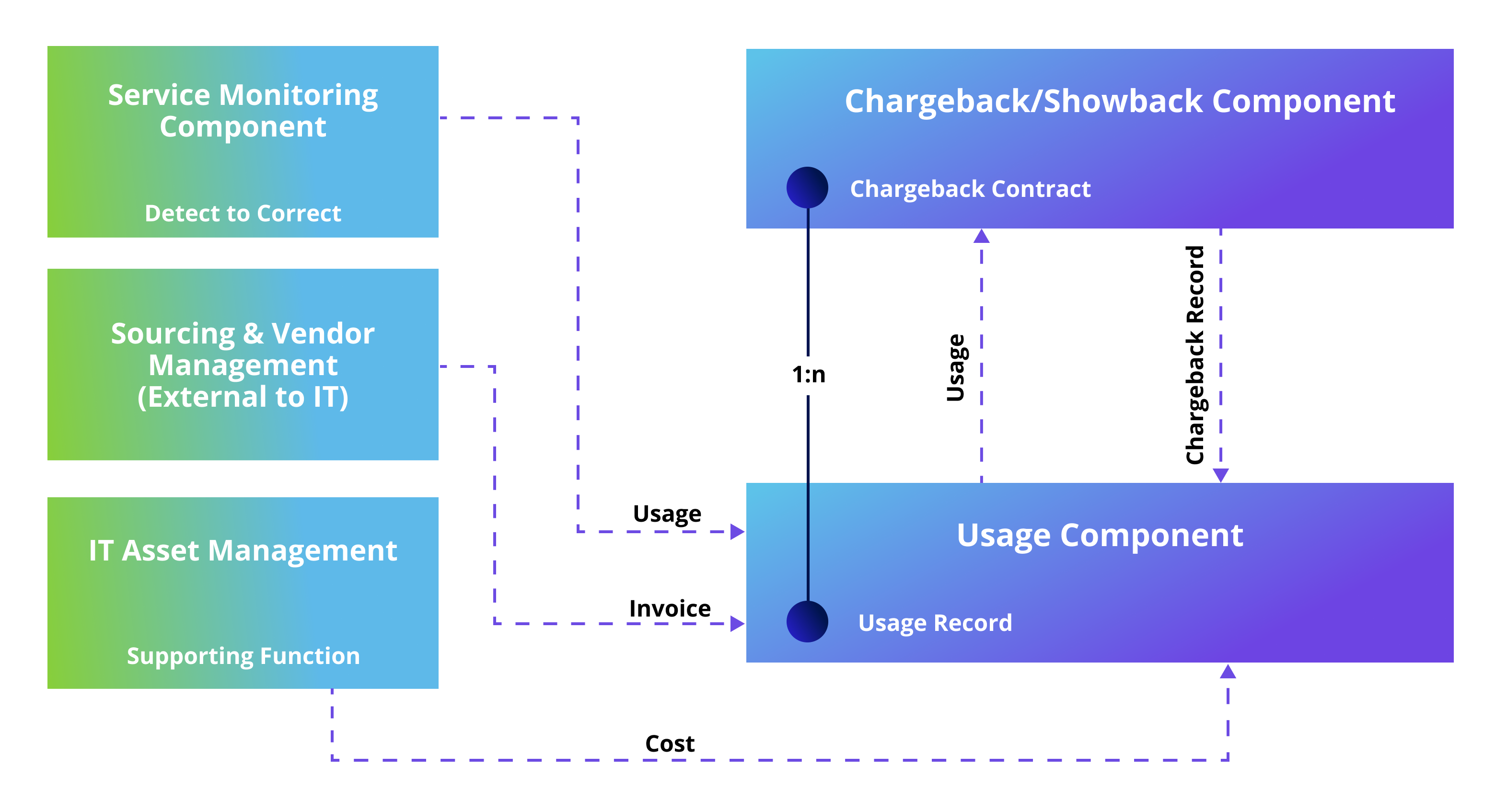More than ever, global enterprises understand the vital role of IT in a digital marketplace, especially in the new normal resulting from a global pandemic. However, knowing the importance of continued modernization does not always result in a commitment to perpetual IT advancement.
Two business-driven patterns for IT investment have persisted over the last two decades:
- Consistent IT demand growth regardless of revenue peaks and valleys
- Growing, flat, or shrinking IT budget in parallel to current revenue and market conditions

While uninterrupted IT modernization is the ideal, too often enterprises base investment on current market conditions. In the midst of a global crisis, this means little or no IT innovation when it is needed most to ensure a company comes out stronger on the other side. On the other hand, if not made with clarity, new IT investments can lead to increased waste and inefficiency for non-optimal IT environments. (Throwing money at a problem is never the best course of action.)
Despite several global and regional challenges since our launch 1993—SoftServe has perpetually grown and established best business and technological practices for IT budget optimization, cost reduction, and unlocking funds for continuing innovation. In this blog, we’ll share five of our learnings on how to reduce waste and promote IT advancement—regardless of fluctuating market and revenue conditions.
1. Cost Transparency
Transparency in IT budgeting is a necessary prerequisite for any cost reduction effort. Most companies report IT costs from the perspective of corporate finance: general ledger (GL) accounts and cost centers. However, this type of cost reporting is insufficient as cost transparency is only achievable when all IT-related costs (both CapEx and OpEx) are tracked and allocated to relevant cost pools.
Admittedly, gathering data and mapping to individual pools or business areas is challenging. Cost definitions vary, are likely spread across departments boundaries, and are difficult to track and quantify. Regardless, there are clear benefits to having estimated costs breakdown:
- Clear total cost of ownership (TCO) data reveals actual “run-the-business” vs “grow-the-business” ratio
- IT application consumption and cost data enables factual conversations with application owners
2. Adjusting SLAs and Consumption
Enterprise IT companies are consumers of multiple commercial software offerings. Software functionality, the number of supported users, and service levels are defined by some form of contractual agreements with a software vendor including license agreements, contracts, subscription plans, and SLAs.

These agreements are usually a tradeoff between functionality, performance, and costs. Typically—SLAs don’t reflect actual service consumption levels. Reevaluating SLAs, subscription plans, and licenses leads to cost reduction.
3. Automation in IT
With regards to automation, “The cobbler’s children have no shoes” is too often the reality in IT departments that are focused on automating line-of-business applications, while failing to automate their own operations. Despite the DevOps revolution, manual processes in IT are common, resulting in low-volume (or low-value) processes with no economically viable alternative historically.
Fortunately, Robotic Process Automation (RPA) has been evolving quietly over the last decade, and is now being used for faster enterprise-scale deployments with lower costs. Any methodical, standardized, and repetitive process that follows consistent rules (while executed through human-machine interaction) is a good candidate for RPA automation.
4. Tracking Consumption with Feedback Loop
Low perceived value of IT can result in wasteful overuse. Implementation of a chargeback system for IT resources can be a significant incentive for behavioral changes among internal consumers—but must be executed the correct way.
Simply pooling IT costs often results in two negative effects:
- Dissatisfied internal users who feel they are paying too much AND/OR
- No perceived incentive to change consumption habits
A usage-based chargeback system provides stakeholders with more control over IT spending. After receiving a transparent cost structure, internal leadership will often cancel the most expensive and seldomly used subscriptions.

5. Eliminate and Consolidate
IT cost transparency unlocks cost optimization potential for “run-the-business” expenses but after years of poor IT practives and M&A—internal IT services are often supported by redundant applications. In such cases, the most effective way to reduce application maintenance costs is to eliminate unnecessary applications.
With IT costs revealed, waste from multiple apps with duplicated functionality quickly becomes clear. Armed with this knowledge, calculating ROI on application consolidation projects is straight forward.
Summary
When waste in IT investment is identified, often little or no new budget is required to take the next steps in modernization for speed, efficiency, and scalability. With minimized financial requirement, innovation no longer needs to be dependent on revenue fluctuations. Performing this IT “housecleaning” and shifting wasted dollars to technologies and processes that work for your company is a first step towards ongoing IT investment optimization.
SoftServe specializes in delivering complex Robotic Process Automation and Application Portfolio Rationalization solutions, utilizing data science and complex workflows to optimize your business while reducing IT costs. Let’s talk about the state of your IT resources and how SoftServe can help you make smarter IT investments.

